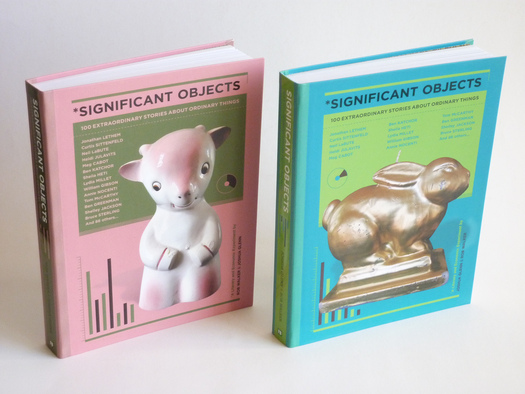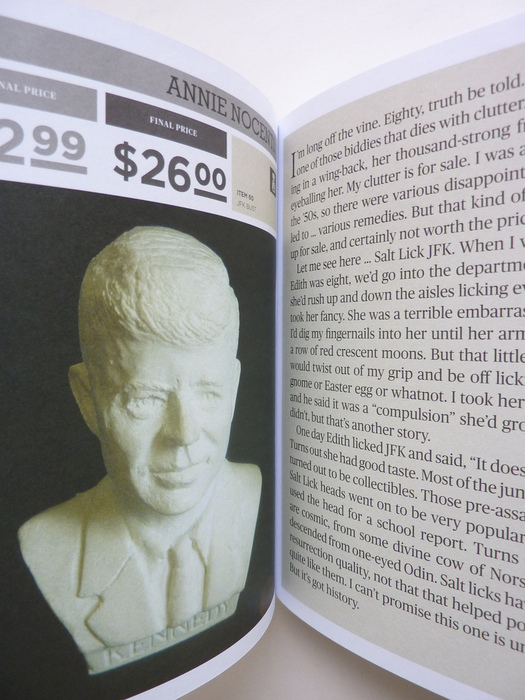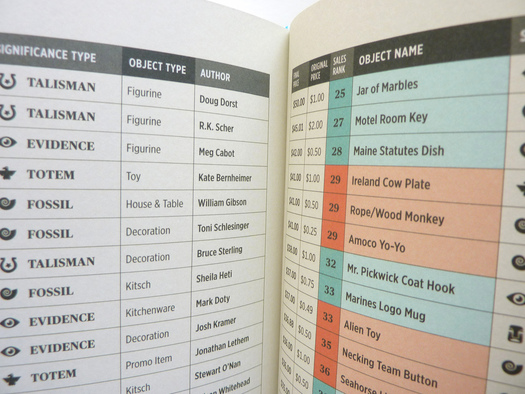
Significant Objects, published by Fantagraphics; design by Jacob Covey.
To avoid burying the lede: The public launch event for the book Significant Objects: 100 Extraordinary Stories About Ordinary Things, is July 10, at The Strand, in New York. Contributors Luc Sante, Shelley Jackson, Matthew Sharpe, Jason Grote, Mimi Lipson, Ben Greenman, and Annie Nocenti will read their stories from the book; co-editors Joshua Glenn and I will also be there. You should go.
Okay.
So partly because this is coming up, and I’ve been doing a little publicity for the book, I’ve got stories and stuff on the brain. And this has led me to a point about that subject that I think needs clarification.
Significant Objects started out as an online “literary and economic experiment.” The hypothesis was that even completely made-up narratives could add measurable value to quotidian objects. With an astonishing crew of contributing writers, a menagerie of thrift-store doodads, and eBay, we proved that this was so. The details are here.
From Significant Objects, published by Fantagraphics; design by Jacob Covey.
Now, the most obvious interpretation of the project is that we used stories to sell stuff. That’s true, of course, and lately it’s become a very popular idea. A number of my friends in the branding industry tell me that this is what they do for a living; uncountable gurus tout the importance of a good story to sell whatever it is you’re selling; and so on.
And yet, what bugs me about the way I hear this line of thinking most commonly expressed is that it rather glibly treats “story” as nothing more than a tool, a means to an end, a mere tactic wholly secondary to whatever object or service the story is supposedly about.
A good story is not a means to an end. It’s an end. It’s a thing of value, all on its own. I suspect our amazing lineup of contributors were more interested in besting each other with the most original tales they could devise than they were in the financial side of our experiment. More to the point: Our readers didn’t have to buy an object, or even place a bid, to enjoy what they were reading. (If that weren’t the case, it wouldn’t make much sense for Fantagraphics to be publishing our book — and it definitely wouldn't make sense to have a public reading!)
I can’t say to what extent we anticipated this, or how much it surprised us. But at some point we realized we weren’t just using stories to sell stuff. Our curious collection of cheap-o yard-sale goods had caused to exist this batch of narratives and imaginative displays that were funny, sad, gross, absurd, surprising, memorable, disconcerting — and, all on their own, significant.
It turned out, in other words, that we were using stuff to sell stories.
Hope to see some of you on July 10.

From Significant Objects, published by Fantagraphics; design by Jacob Covey.


